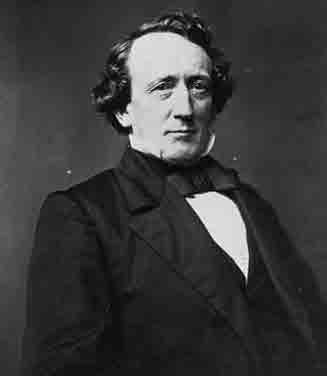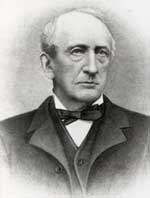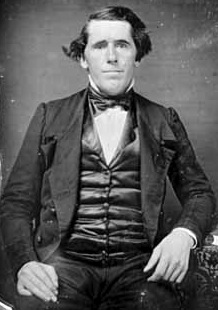Anoka County, Minnesota

Copyright 2017 – Gary C. Dahle
Anoka County, Minnesota
Anoka County, Minnesota, established in 1857, is located in the northern part of the Twin Cities Metro area.
Anoka County is the fourth most populous county in Minnesota, and its county seat is the city of Anoka.
However, Anoka County’s largest city by population is Coon Rapids.
Anoka County comprises the northernmost portion of the seven-county Metro area – the sixteenth largest metropolitan area in the United States.
The Rum River – which flows through the county – was a common route to Lake Mille Lacs for the Dakota Indians.
Today, U.S. Highway 10 is a primary north-south, and east-west, transportation route.
Minnesota Highway 65 is also a primary north-south transportation route.
Anoka County is bordered:
- on the north by Isanti County,
- on the west by Hennepin County and Sherburne County,
- on the south by Hennepin County and Ramsey County,and
- on the east by Chisago County and Washington County.
Anoka County derived its name from the Dakota word “anokatanhan” – which can be translated “on both sides” – a reference to the region around Anoka then located on both sides of the banks of the Rum River.
In 19th century, the Anoka area became a center of fur trade and logging.
By an act of the Minnesota Legislature on May 23rd, 1857, Anoka County was formed out of Ramsey County, and Benton County.
County Population
Anoka County, Minnesota had a population of 330,844 as of the 2010 Census, an increase of 11% over the 2000 Census population of 298,084.
Anoka County is very diverse in regards to land-use, encompassing first and second ring suburbs, undeveloped rural areas, small towns, and recent suburban developments.
Primary Cities
The city of Anoka is the county seat for Anoka County Minnesota, and had a population of 17,142 as of the 2010 Census.
Other notable cities in Anoka County, Minnesota include Andover, Bethel, Blaine, Centerville, Circle Pines, Columbia Heights, Columbus, Coon Rapids, East Bethel, Fridley, Ham Lake, Hilltop, Lexington, Lino Lakes, Oak Grove, Ramsey, St. Francis, and Spring Lake Park.
Blaine
The city of Blaine is located primarily in southeastern Anoka County, with a very small corner of the city of Blaine located in northwestern Ramsey County.
Blaine is bordered by the cities of:
- Ham Lake to the north,
- Coon Rapids to the west,
- Spring Lake Park, Mounds View and Shoreview to the south,and
- Circle Pines, Lexington, and Lino Lakes to the east.
As of the 2010 census, the population of Blaine was 57,186.
In 1877, Blaine separated from the city of Anoka and was organized as a township – named after James G. Blaine – a senator and three-time presidential candidate from Maine.
The city of Blaine is home to the 600-acre National Sports Center, which features:
- 50 plus soccer fields – including a stadium,
- a golf course and driving range,
- a velodrome,and
- the Schwan’s Super Rink – containing 4 Olympic sized, and 4 regulation sized, ice rinks.
The city of Blaine is served by the Anoka-Hennepin, Centennial, and Spring Lake Park School Districts.
Higher education opportunities within the city of Blaine are offered by the Globe University/Minnesota School of Business, a private career college and trade school.
Coon Rapids
The city of Coon Rapids, with a population of 61,476, is the 12th largest city in Minnesota, and is located in Anoka County.
The city of Coon Rapids is the home of Bunker Hills Regional Park, and the Bunker Hills Golf Course, which previously hosted the Senior PGA Tour.
The city of Coon Rapids is served by the Anoka-Hennepin School Districts (Go Cardinals!).
Fridley
The city of Fridley is located in Anoka County, and is bordered by the cities of:
- Coon Rapids and Spring Lake Park to the north,
- Mounds View and New Brighton to the east,
- Columbia Heights and Minneapolis to the south,and
- Brooklyn Park and Brooklyn Center to the west.
As of the 2010 census, the city of Fridley had 27,208 residents.
In 1847, settler John Banfill arrived in the area which was then known as Manomin – the Ojibwe word for wild rice – which apparently was prevalent in the area.
At the time, Manomin included the area where the cities which later became known as Columbia Heights, Fridley, Hilltop, and Spring Lake Park were located.

Rice Creek – which flowed through the Manomin area – was subsequently named after Henry Mower Rice, an early Minnesota politician who had recently acquired a significant amount land in the Manomin area, presumably for speculation purposes.
Mr. Rice was politically active, and was instrumental in achieving statehood for Minnesota.
He was a member of the University of Minnesota Board of Regents from 1851 to 1859.

In 1857-58, Mr. Rice was elected by the Minnesota Legislature to be Minnesota’s first U.S. Senator, serving in Washington from 1858 to 1863.
He was succeeded in the U.S. Senate by Alexander Ramsey – after whom Ramsey County, Minnesota was named.
In 1865, Mr. Rice unsuccessfully ran for Governor of the State of Minnesota.

In 1855, Abram M. Fridley, for whom the city of Fridley is named, was elected as the first political representative for the Manomin area in the Minnesota Legislature.
In 1857, the Manomin area was separated from Ramsey County, and Manomin County was established as the smallest county in the United States at the time, having only 18 sections of land.
However, in 1870, Manomin County was annexed by Anoka County, and reduced to township status.
In 1879, the Minnesota Legislature changed the township’s name from Manomin to Fridley, in honor of Abram M. Fridley.
The village of Fridley was not incorporated until 1949, and became a city in 1957.
(i) Employers
Fridley is currently home to the world headquarters of Medtronic Inc.
Other major employers in Fridley include BAE Systems (formerly United Defense), Cummins, and Unity Medical Center – part of the Allina Healthcare system.
(ii) Schools
Fridley is served by Fridley Independent School District 14, the Anoka-Hennepin School District 11, and Columbia Heights School District 13.
Fridley High School, Fridley Middle School, and two elementary schools (Hayes Elementary and Stevenson Elementary) are part of the Fridley Independent School District 14 (go Tigers!).
Also located in Fridley are:
- Totino-Grace High School – a private Roman Catholic high school (go Eagles!),
- Calvin Christian High School – a private Christian high school,and
- Al-Amal School – a private Islamic K-12 school.
Lino Lakes
The city of Lino Lakes is located in Anoka County.
Lino Lakes is bordered by the cities of:
- Blaine and Circle Pines to the west,
- Columbus to the north
- Hugo to the east,and
- North Oaks and Shoreview to the South,
and surrounds the Village of Centerville.
As of the 2010 census, the population of Lino Lakes was 20,216.
Lino Lakes originated as Centerville Township, which was organized August 11, 1857, and initially encompassed three “communities”:
- a “German settlement” west of the area’s lakes,
- a “Swede settlement” south of the area’s lakes, and
- a “French settlement” east of the area’s lakes.
In the 1950s, neighboring villages annexed land away from Centerville Township.
In response, on May 11, 1955, the residents of Centerville Township voted to incorporate into a village known as Lino Lakes.
The Village of Lino Lakes included the original Centerville Township area – with the exception of the Village of Centerville.
In 1972, the status of Lino Lakes was changed into a city.
The origin of the word “Lino” in the name of the city is uncertain.
Copyright 2017 – All Rights Reserved
Gary C. Dahle – Attorney at Law
2704 County Road 10
Mounds View, MN 55112
Phone: 763-780-8390 Fax: 763-780-1735 gary@dahlelaw.com
Links:
Western North Dakota Counties – see http://www.dahlelawnorthdakota.com/north-dakota-counties/
